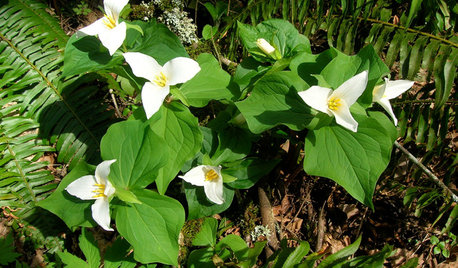Best time and way to transplant trilliums
hallerlake
14 years ago
Featured Answer
Comments (18)
lilydude
14 years agoKarchita
14 years agoRelated Professionals
Carlisle Landscape Architects & Landscape Designers · Accokeek Landscape Architects & Landscape Designers · Sahuarita Landscape Architects & Landscape Designers · Ashburn Landscape Contractors · Hannibal Landscape Contractors · Petaluma Landscape Contractors · Vancouver Landscape Contractors · Winter Gardens Landscape Contractors · Ferguson Landscape Contractors · Peoria Fence Contractors · Bartlesville Fence Contractors · Fremont Fence Contractors · Wake Forest Fence Contractors · La Mirada Fence Contractors · Landover Outdoor Lighting & Audio Visual Systemshallerlake
14 years agohemnancy
14 years agoKarchita
14 years agojoesdog
14 years agobobb_grow
14 years agoKarchita
14 years agohallerlake
14 years agogardengal48 (PNW Z8/9)
14 years agoschizac
14 years agoadoran2000
7 years agosharonann z5 Ont
7 years agolast modified: 7 years agoLaurie (8A)
7 years agoplantknitter
7 years agoenith
7 years agoplantknitter
7 years ago
Related Stories

GARDENING GUIDESGreat Design Plant: Trillium Ovatum
Early-blooming Pacific trillium welcomes spring to woodland gardens in the Pacific Northwest
Full Story
EDIBLE GARDENSWhy Grow Quince? For Beauty, Fragrance and Old-Time Flavor
Delightfully perfumed fruit and lovely spring blossoms make this apple and pear cousin worth a spot in the garden
Full Story
FALL GARDENINGWhy Fall Is the Best Time for Planting
Spring is overrated for planting. Starting plants in autumn has advantages for both garden and gardener
Full Story
LANDSCAPE DESIGNIs It Time to Consider Fake Grass?
With more realistic-looking options than ever, synthetic turf can be a boon. Find the benefits and an installation how-to here
Full Story
GARDENING GUIDES10 Easy Edibles for First-Time Gardeners
Focus on these beginner-friendly vegetables, herbs, beans and salad greens to start a home farm with little fuss
Full Story
GARDENING AND LANDSCAPING10 Ways to Enjoy Your Outdoor Room More
Step up the comfiness and convenience of your porch, patio or yard to make time spent outdoors even better
Full Story
GARDENING AND LANDSCAPINGSimple Pleasures: 9 Ways to Get Cozy Outside This Fall
Enjoy this magical time with outdoor pleasures that take little effort but provide lots of gratification
Full Story
WINTER GARDENINGExtend Your Growing Season With a Cold Frame in the Garden
If the sun's shining, it might be time to sow seeds under glass to transplant or harvest
Full Story
BOOKSBook to Know: 'Marrakesh by Design'
A transplanted design connoisseur shares ways to conjure the enticing feel of Morocco in your home and outdoor rooms
Full Story
GARDENING FOR BUTTERFLIES3 Ways Native Plants Make Gardening So Much Better
You probably know about the lower maintenance. But native plants' other benefits go far beyond a little less watering and weeding
Full StoryMore Discussions











gardengal48 (PNW Z8/9)